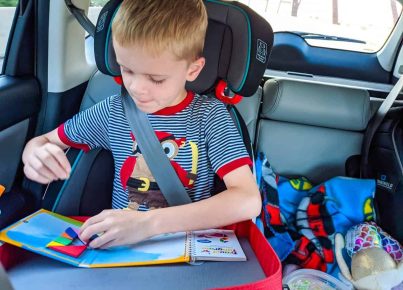In a classroom filled with bustling children, each student comes with their own set of unique abilities and challenges. Among these students are ambidextrous kids – those who have the ability to use both their left and right hands effectively. Understanding and supporting these students can be beneficial, not only for their academic development but also for their self-esteem and overall well-being.
Ambidexterity is a rare trait, found in about 1 percent of the population. It can manifest in different ways; some ambidextrous kids show equal proficiency with both hands, while others may prefer one hand for certain tasks and the other hand for different activities. Regardless of the degree of their ambidexterity, these kids require specific support in the classroom to help them thrive.
Here’s what teachers need to know about supporting ambidextrous kids in the classroom:
1. Recognize Their Unique Needs:
Ambidextrous children may struggle with tasks that are traditionally taught in a hand-specific manner, such as writing or using scissors. Teachers should be observant and recognize signs of discomfort or difficulty when these children are performing fine motor skills.
2. Encourage Exploration:
Allow ambidextrous students to explore tasks with both hands. For example, encourage them to write or draw with either hand and help them discover which hand feels more natural for different activities.
3. Avoid Hand Bias:
Discourage phrases like “the right hand is the right way” which can cause confusion or a feeling of inadequacy in ambidextrous children. Instead, promote an inclusive environment where using any hand is acceptable.
4. Provide Appropriate Tools:
Ensure there are left-handed tools available as well as those designed for right-handed individuals. Things like left-handed scissors or even adjustable sporting equipment can make a big difference.
5. Teach Flexibility in Techniques:
Offer guidance on various ways to approach tasks that may typically favor one hand over another. For example, show them different grips on pencils or how they can tilt their paper differently when writing.
6. Adjust Classroom Layout:
Be mindful of desk arrangements; ambidextrous children might need more space than others if they alternate hands.
7. Be Patient With The Learning Process:
Understand that mastering skills may take longer for ambidextrous students because they might be figuring out which hand to use for each new task.
8. Acknowledge Their Strengths:
Ambidexterity can be seen as an asset – it often correlates with creativity and musical ability. Celebrate these strengths and provide opportunities for children to showcase them.
9. Offer Emotional Support:
Conversations about being unique and different in positive ways can help ambidextrous children feel more secure about their skillset.
10. Communicate With Parents:
Share observations with parents about how their child uses their hands differently and work together to support their development effectively at home too.
By understanding the attributes of ambidexterity and implementing supportive strategies, teachers can help ambidextrous students navigate their education more comfortably and confidently—ultimately fostering an inclusive learning environment where every student is positioned for success.





